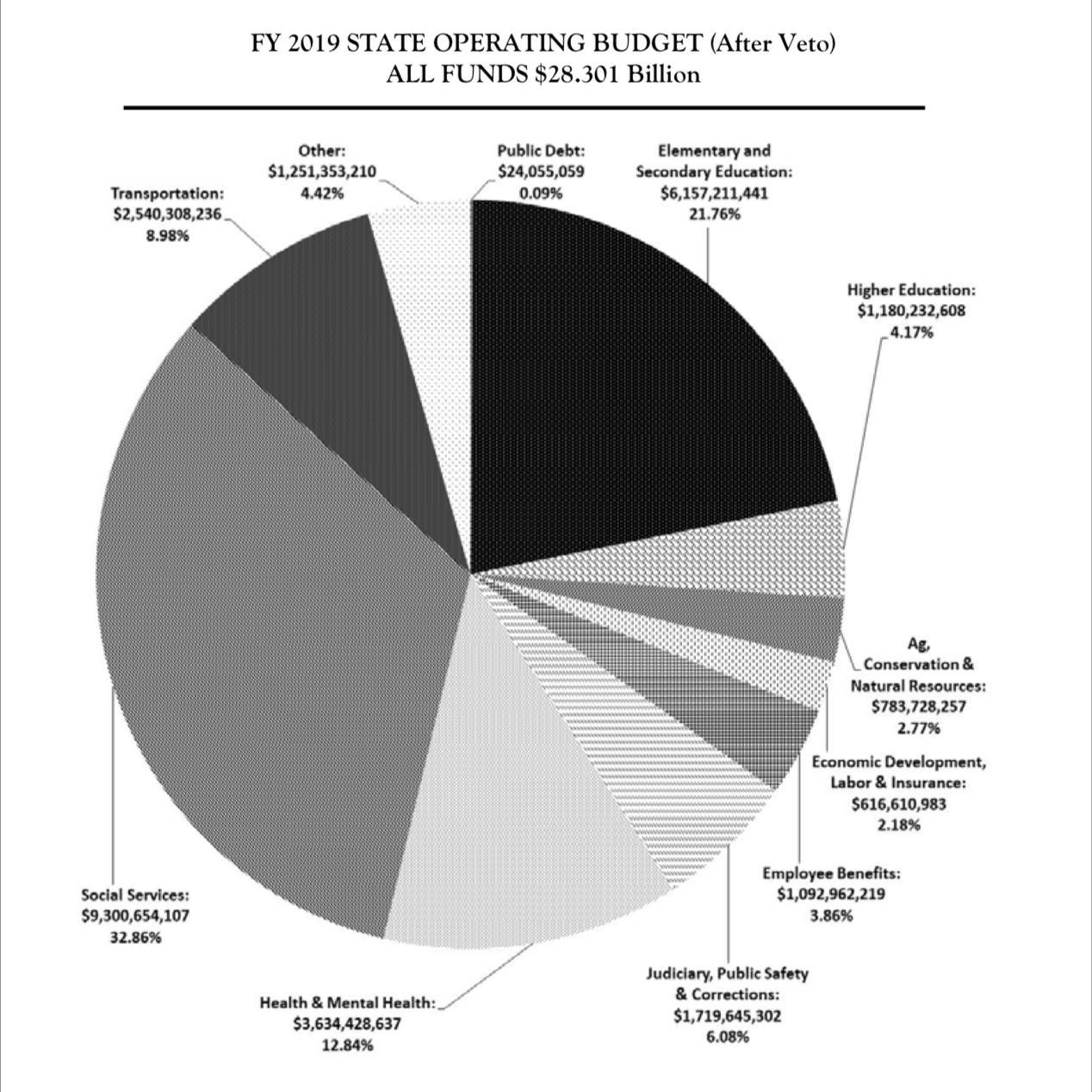Even if state revenues do not grow for the current fiscal year, budget hawks say the budget, as signed, is still in good shape. But stagnant collections could have an impact on the budget currently under construction in the Missouri General Assembly.
As it stands, net general revenue collections for 2019 fiscal year-to-date were down 4.3 percent compared to March 2018, from $6.72 billion last year to $6.43 billion this year. Which is an improvement from the 7 percent year-to-date decrease for January.
“Revenue collections are always difficult to predict but it looks like the trends are going in the right direction, right now,” said Budget Director Dan Haug. “It is our expectation that it will be in this late-April-early-May period when we would really start making up the revenues, and it looks like we started doing that over the last couple of months, and particularly the last week or two. I think the trends are going in a good direction for us.”
“We are continuing to trend in the right direction,” said Rep. Kip Kendrick, ranking member of the House Budget Committee. “I remain cautiously optimistic, a little less optimistic than I was a few months ago but still cautiously optimistic that we are going to, I don’t think we will hit our census revenue estimate which was 1.7 percent growth [from FY 18] but that it will be closer to zero and maybe a little bit in the positive.”
But even if the state does not hit the consensus revenue estimate for FY 19, there could still be enough collections to meet the obligations laid out in the budget.
How?
Because the FY 19 budget is based off the original consensus revenue estimate of $9.418 billion and the state collected $9.47 billion for FY 2018, a 5 percent growth from the previous year and far above the estimate.
“We always want to meet our growth projections, certainly that makes life easier. But because FY 18 was so good, revenues can actually decline by half a percent and that will still provide us enough funds to fully fund the FY 19 budget,” said Haug.
Yet, the lagging revenue could have a more reaching implication on future budgets.
The budget is currently under construction by the Missouri Assembly, which has been approved by the House and is now in the hands of the Senate, is based on $9.821 billion in general revenue. The consensus revenue estimate for FY 20 predicts 2 percent growth from the revised 1.7 percent growth for FY 19 based on collections for FY 18.
“If we don’t see any growth, if we see basically flat general revenue collections, it can, and likely will, become a problem for the FY 20 budget,” said Kendrick. “So if we don’t hit that 1.7 percent growth [for FY 19] it very likely means our FY 20 budget will be out of balance unless we see substantial growth beyond the 2 percent we project.”
Haug noted that they are always cautious about how they look at the next year’s budget. He pointed out that Gov. Mike Parson’s recommendations didn’t spend every last penny, keeping roughly $116 million unspent, and it fully funded the supplemental.
“We are always cautious when we look at the budget, particularly that far out, but right now I feel like conservative leadership of Governor Parson on the budget, we are in better shape than I have seen us in a long time to deal with revenues if they don’t come in,” said Haug.
Fluctuating revenues is not uncommon for Missouri nor is slower growth years following large growth year, particularly look at recent years.
For FY 2013, general revenue collections increased 10.1 percent, far above the original 3.9 percent estimate. The following year, general revenue collections decrease by 1 percent. FY 15 saw 8.8 percent growth, doubling the original 4.2 percent projection. The following year, collections grew 0.9 percent, far below the revised estimate of 3.2 percent.
“Throughout history, and even in the last 10 years, that has happened quite a few times” where large growth years were followed by small growth years, noted Haug.
“Everybody is always concerned about state revenues regardless of what they’re doing — There have been times when we have had really strong years and people were concerned because they didn’t know why we were having such a strong year. I think we should always be cautious about revenue and be cognizant that there could be factors that we are not thinking about at any given time that are having an impact on state revenue,” said State Treasurer Scott Fitzpatrick.
It is also hard to compare month-to-month data, year-from-year because of the variety of factors that play into net revenue numbers. For example, in 2018, the state paid back refunds quicker than in 2017 and the state paid out tax credits in a different month than 2017, all of which plays into monthly revenue figures, according to Kendrick.
Kendrick noted there is always fluctuation with incoming revenues, whether due to structural changes or the economy. For FY 19, there is a multitude of factors to consider, he added.
Missouri has made multiple changes to the tax structure, and rate, in the state — in fact, the FY 18 growth triggered another tax cut from SB 509. But the biggest factor was the federal tax cuts passed in December 2017.
“The Federal Tax Cut and Jobs Act was a major overhaul of the tax system. It had a dramatic change in how taxes are collected as well as withholding tables,” said Kendrick. “It really changed the system so much that people who didn’t make updates to their W-4s saw potentially significant swings in what was being withheld.”
The change away from itemized deductions to the standard deduction has been pointed as part of the cause for under-withholding in Missouri. Those who kept the same deductions, or intentionally over-withheld, were seeing less paid to the state per paycheck which will likely result in a small refund or larger bill.
The larger tax bill was dubbed an “April Surprise” by Rep. Robert Ross, who is chairing the special committee looking into the revenue issue. It is part of the reason officials are looking so closely to April 15 to get a better sense of FY 19 funds.
“I am cautiously optimistic that we will continue on that trajectory and get us closer and closer to that consensus revenue estimate as we get closer to the end of the year,” said Fitzpatrick.
“We are going to continue to monitor revenue collections closely and we will make sure we fulfill our constitutional duty to have a balanced budget at the end of the year,” said Haug. “We are prepared to take action as needed to make sure the FY 19 budget is balanced.”

Alisha Shurr was a reporter for The Missouri Times and The Missouri Times Magazine. She joined The Missouri Times in January 2018 after working as a copy editor for her hometown newspaper in Southern Oregon. Alisha is a graduate of Kansas State University.








